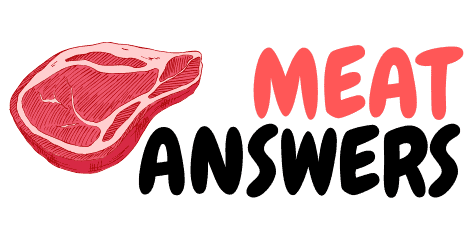I’ve owned several Weber grills over the years, and not to brag, but I’m pretty good at assembling them too! But what I was initially confused when assembling my first Weber grill was to figure out which way the grill grate would go.

Well, the answer to which way Weber grill grates go is that the flat side should face upwards, and the other side that has four small legs in each corner faces downward.
Table of Contents
Which Way do Weber Grill Grates Go?
When you walk around the store shopping for the best Weber grill and open the lid of the grills, you’ll often see two different orientations—the narrow, pointed side facing up and wide, flat side facing up, so which orientation is correct!

The wide, flat side of the Weber grill grate should always face upwards because in this direction it offers optimal contact with the food and the best grill marks.
Do Grill Grates Go Flat Side Up or Down?
If you’re wondering if grill grates go flat side or upside down, it sort of depends on the type of grates.
Starting with cast iron and carbon steel grates, which are dark-grey color and feature a porous surface, this type of grate often has legs on the underside, that is the side that’s supposed to be facing down.
If you don’t notice any legs on either side of the grill grate, take a closer look at the two sides of the grate to determine which side is flatter.
As a thumb rule, the side that’s flat should always face upwards, and the narrow, pointed side should face down.
When the flat side makes direct contact with your food, it results in more heat and fast, even heat distribution.
Some grill grates such as steel rod grates are fitted with several rods that have been welded together. In this case, the side with longer rods should always be pointing upwards.
If your grill has V-groove grill grates, the side with the V-grooves should face upwards to catch the fat and drippings from the food and collect them in a trough.
Although not common, yet still available through aftermarket manufacturers, rail grates have a side with long rails and another side with holes, you can place any side upward.
Are Weber Grill Grates Reversible?
The grates of certain Weber grill models like the Genesis II range are reversible. These porcelain-enameled cast-iron cooking grates feature a thin side and a wide and flat side, both designed for different purposes.
If you’re cooking delicate foods such as fish and shrimp, the thinner side of the grate should face upwards but if you want thick sear marks, flip the grates so that the thicker side is facing up.
Another big benefit of Weber reversible grates is that they do not need to be seasoned, but you simply have to preheat the grill with all the burners on high for roughly 15 minutes, brush the grates with a soft bristle brush to remove the dirt and debris, adjust the burners to your cooking temperature, and voila—you’re ready to grill.
What Will Happen if Weber Grill Grate is Reversed?
There’s actually a big benefit to using a Weber grill grate in reverse position, that is after you cook your meat on the flat top side as intended for even heat distribution and cooking.
After your meat is fully cooked on the flat side, take if off the grill and turn the grates so that the curved line side is facing upwards. Then toss the meat back in the grill to get those sear marks.
However, this is not recommended, and there are several other ways to achieve sear marks on your steaks and other types of meat.
Do You Have to Season Weber Grill Grates?
One of the noteworthy features of Weber grill grates is that they do not require seasoning or pre-seasoning prior to use.
The company however does recommend preheating your grill and brushing the grates with a grill brush before using the grates for the first time.
The reason Weber cast iron grates do not need to be seasoned is that the newer Weber grills are topped with a porcelain enamel coating.
How Long do Weber Grill Grates Last?
Weber grill grates and most, if not all of its components are built to last for years to come with proper care.
The period of time your Weber grill grates will last depends on their upkeep, which is why it’s important to clean your grates after each use, and store your grill away from harsh weather elements when not in use.
According to the Weber warranty, the cooking grates of most models and flavorizer bars are guaranteed to last for at least 5 years with no rust or burn-through.
To prevent your Weber grill grates from rusting, apply a light coat of oil to them after cleaning. My favorite oil to apply is olive oil, but you can also use palm and grapeseed.



